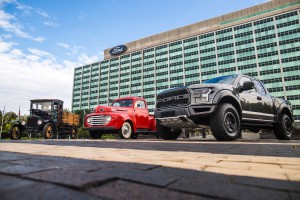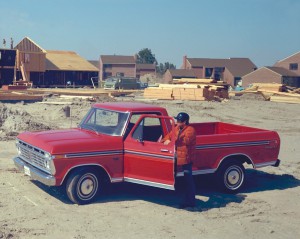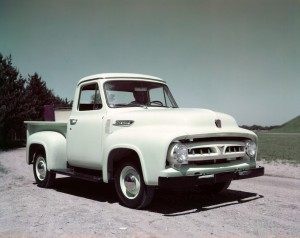
Ford marked the 100th anniversary of its first pickup truck: the Model TT at its world headquarters.
Ford Motor Co. is marking an important milestone this week as it celebrates the 100th anniversary of what became the first pickup truck — the Ford Model TT.
Bob Kreipke, Ford historian, said nine years after introducing the first Model T Ford customers were asking for a vehicle that could haul heavier loads and provide greater utility for work and deliveries. Ford answered with the Model TT, which retained the Model T cab and engine. The Model TT came with a heavier-duty frame capable of carrying one ton of payload. The factory price was $600; 209 were sold that year.
A century later, the pickup truck is perhaps the most iconic of all American vehicles.
The Ford F-Series is America’s best-selling truck for 40 consecutive years and best-selling vehicle for 35 straight years. In Canada, Ford F-Series has enjoyed 51 consecutive years as best-selling pickup and now marks seven straight years as best-selling vehicle, Kreipke noted.
Ford has worked steadily to improve its trucks, he said.
(Ford posts better-than-expected second quarter. Click Here for the story.)
Similar to the Fordson tractor introduced in 1917, Henry Ford envisioned a chassis that could accommodate third-party beds, cargo areas and other add-ons to deliver the increased functionality needed to get work done. It was a formula for success. By 1928, Ford had sold 1.3 million Model TTs before replacing the truck with the more capable Model AA with a 1.5-ton chassis.
In addition, Henry Ford marketed his early trucks heavily in rural areas, “Model AA trucks in particular had a certain class to them,” he said. “Customers could use them on the farm, yet still take them to church on Sunday.”
The Model AA was available exclusively as a chassis cab and offered in two lengths, with new powertrain and axle options for greater capacity and helped spawn a legion of outfitters, who equipped the truck special cargo boxes of various dimensions.
To stay ahead in what had become a hotly competitive business, Ford replaced the Model AA with the even more capable Model BB in 1933. Many were outfitted as mail and freight vehicles, ambulances and stake trucks. Two years later, Ford introduced the 1935 Model 50 pickup, powered exclusively by its famous Ford Flathead V8 engine.

The beginning of the best-selling vehicle year-in and year-out: the 1975 F-150, the year that Ford changed the name from F-100.
(Ford powers up the police with pursuit-ready F-150 pickup. Click Here to check it out.)
By 1941, Ford had sold more than 4 million trucks. Changing over to war production resulted in the loss of consumer sales, but a gain in experience building heavy-duty military truck chassis and four-wheel-drive personnel carriers. A year after consumer production resumed in 1947, Ford leveraged that knowledge to provide even more innovations for its customers.
“After the war, a lot of rural Americans moved to urban and suburban centers looking for work, and many took their Ford pickups with them,” said Kreipke. “Ford saw this as an opportunity, and began work on the next generation of trucks for 1948, what came to be known as F-Series Bonus Built trucks.”
In 1961 – 44 years after the Model TT – Ford introduced its fourth-generation F-Series. Lower and sleeker, it debuted the company’s revolutionary twin I-beam front suspension. An upscale Ranger package appeared in 1967. Ads emphasized improved comfort, value and durability, as Ford trucks now offered power steering and brakes, and a lower chassis profile. A larger SuperCab option introduced in 1974 featured more comfortable seating to attract dual-purpose work and family buyers.
With the arrival of the sixth-generation F-Series in 1975, Ford dropped the popular F-100, replacing it with a higher-capacity F-150 pickup to combat the C/K trucks from General Motors. By 1977, F-Series pulled ahead in the sales race, and 26 million trucks later, Ford hasn’t looked back.
That same year, a copywriter for a Ford truck magazine is said to have written three simple words that would come to define the brand – Built Ford Tough. It is more than a slogan – it’s the F-Series brand promise to its owners and the mantra for Ford’s entire truck team.
(Ford adding hybrid Mustang, other battery models. Click Here for the story.)
Trucks were fast becoming universal family vehicles, in addition to being work trucks, according to Kreipke.

